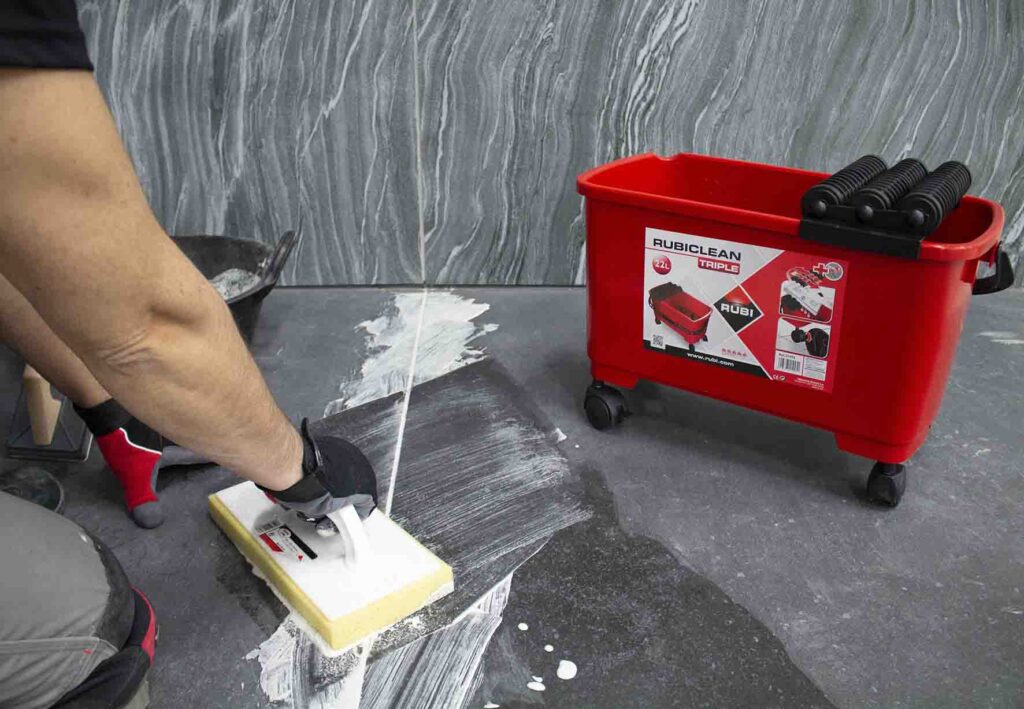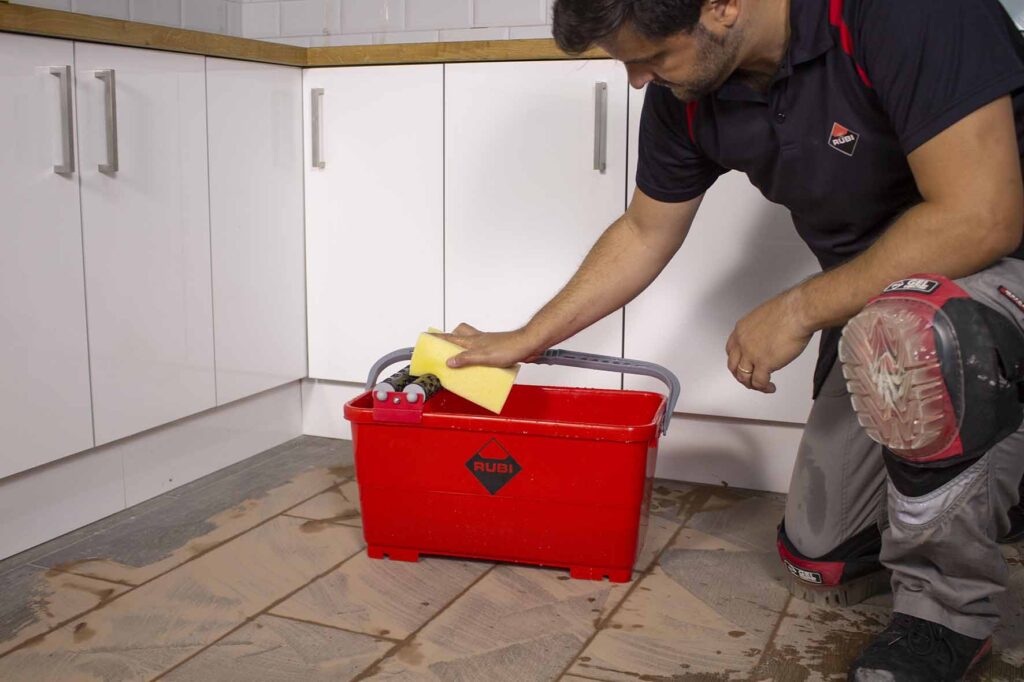When you first learn how to tile, cement grout is often presented as the standard option for sealing your work. However, more tilers are now opting for epoxy grout for both indoor and outdoor projects. Epoxy grout is just one of several types available, but how does it differ from cement grout?


In 2018, structural projects utilised approximately three billion square feet of ceramic tile, highlighting its enduring popularity. For many years, cement grout has been the go-to choice for tilers to bond these tiles effectively.
While cement grout has its merits, it has become a costly option that many are starting to reconsider. Additionally, it lacks the durability needed for high-traffic areas or outdoor spaces. So, what alternative options are available for grouting? This guide covers everything you need to know.
FOUR MAIN TYPES OF GROUT
Below are the main types of grout used in tiling projects.
1. SANDED GROUT
Cement grout is available in two types: sanded and unsanded (also known as non-sanded). As the name implies, sanded grout is a mortar mixed with sand. This type of grout is ideal for grout lines wider than 3mm, as the sand content provides added strength to the joints.
Sanded grout is particularly suited for ceramic and stone tiles, which often have larger grout joints. Its durability makes structures more resistant to wear and tear, contributing to their longevity. However, sanded grout has its drawbacks—it tends to attract dirt and is highly absorbent. To counter this, it’s recommended to seal the grout immediately after application to enhance its resistance and maintain its appearance over time.
2. UNSANDED GROUT
Unsanded grout is a mixture of water, cement, and fine particles without sand. It is specifically designed for grout joints smaller than 3mm. Due to the absence of abrasive particles, unsanded grout is less robust and prone to shrinking when used in larger grout joints, which can leave the grout lines exposed.
This type of grout is an excellent choice for bathroom floors and walls, as well as for use with ceramic tiles and marble. It also pairs well with natural stone, providing a smooth, clean finish that complements these materials.
3. FURAN GROUT
Furan grout is made up of polymers of furfuryl alcohol, making it resistant to wear, tear, scratches, and stains. It has a lot of similarities with epoxy grout and is also suitable for industrial structures.
It’s important to note that since it uses alcohol, no water is added to the mixture. Furan grout is best used in chemical handling areas since it has high chemical resistance.
4. EPOXY GROUT
Here’s our favourite grout! Epoxy grout is a premium mixture made from epoxy resins and a hardener, which gives it exceptional strength and durability.
Over the years, many tilers have favoured epoxy grout for use in industrial structures. Today, however, it has become increasingly popular in residential settings, particularly for creating stronger, more durable surfaces in kitchens, bathrooms, and tiled fireplaces, among other areas.

REASONS WHY YOU SHOULD CHOOSE EPOXY GROUT
Here are five benefits of using epoxy grout.
1. THEY CALL IT BOMB PROOF
While “bomb-proof” might be a bit of an exaggeration, epoxy grout is widely regarded as stronger than the tiles themselves. Its unique composition offers remarkable versatility and durability, making it the ideal choice for high-traffic areas, both indoors and outdoors.
In homes, the living room and hallway experience the most foot traffic throughout the day, in contrast to quieter spaces like the bedroom. Outdoor areas with high traffic include shopping centres, restaurants, and hospitals. While it might not withstand bombs, heavy machinery certainly won’t crack or crumble epoxy grout.
2. IT’S NON-POROUS
Most of epoxy grout’s standout features stem from its non-porous nature. Being non-porous means the grout does not allow air or liquids to pass through it. This ability to repel substances makes it highly resistant to stains.
This quality makes epoxy grout ideal for wet environments such as bathrooms, chemical handling areas like laboratories, and stain-prone spaces like kitchen backsplashes, floors, and walls. With epoxy grout, you can rest assured that whatever substances you encounter in your home or business won’t affect the grout’s appearance or durability.
3. DOESN’T NEED A SEALER AFTER APPLICATION
Epoxy grout sets much faster than cement grout, and because it is resistant to various substances, there’s no need to worry about sealing the surfaces. With careful application and proper cleaning, epoxy grout will remain effective and look good for years to come.
4. THE GROUT DOESN’T DISCOLOUR
There’s nothing worse than watching the colour of a structure change week after week. When substances like shampoo spill and stain cement grout, its components can lead to discolouration.
Spills of oil, dish soap, food colouring, and similar substances commonly found in the kitchen can also cause grout to lose its colour. However, if you’ve used epoxy grout to fill your joints, this is no longer a concern.
5. COLOUR VARIATION
Epoxy grout is available in a wide range of shades. Forget the classic grey—how about mocha? There are browns, tans, and many other colour options to choose from.
Not only do you get to select your preferred colour, but you can also enjoy that colour throughout the life of the structure, without worrying about fading or discolouration.

TYPES OF EPOXY GROUT
The three best types of epoxy grout are the following:
Laticrete is currently the best epoxy grout in the market. It’s comprised of epoxy, hardener, and sand.
The sand comes in different colours and dazzles used to create shiny effects. It’s excellent on ceramic tiles, marble, stone tiles, or glass.
EPOXY VERSUS CEMENT GROUT
If you’re second-guessing your choice of cement grout, here are some compelling reasons to consider switching to epoxy grout instead:
Cement grout tends to shrink over time, whereas epoxy grout retains its durability. It does not shrink, crack, or crumble, making it a longer-lasting option.
Cement grout is too lightweight for areas with heavy foot traffic. If you’re working on a commercial or high-traffic space, epoxy grout’s superior strength is a far better choice.
Another key consideration is that cement grout is highly porous, which makes it vulnerable to chemicals, stains, and liquids. Exposure to these substances can accelerate damage, causing the grout to shrink or crumble. In contrast, epoxy grout is non-porous and resistant to such reactions.
Staining is another common issue with cement grout, and once it’s stained, it can be very difficult to clean. Epoxy grout, however, is easy to maintain—most stains can be wiped away with minimal effort.
If you like the colour of your cement grout, be aware that it is unlikely to last. Over time, exposure to certain chemicals will cause discolouration, detracting from the appearance of your work. Epoxy grout, on the other hand, resists chemical interactions and keeps its colour intact for years, ensuring your chosen shade remains vibrant.
From this comparison, it’s clear that epoxy grout offers significant advantages over cement grout. Unless you’re prepared for regular maintenance and repairs, epoxy grout is the smarter choice. However, like any product, epoxy grout has its challenges, so it’s important to weigh all the factors before making your decision.

COST COMPARISON: EPOXY VS. CEMENT GROUT
When comparing epoxy grout and cement grout, cost is one of the most significant factors to consider. Epoxy grout is typically much more expensive upfront, with prices often two to three times higher than cement grout. This higher initial cost is due to its advanced formulation, which includes resin and hardeners that provide superior durability, chemical resistance, and stain-proof qualities. Cement grout, by contrast, is more affordable, making it a popular choice for standard residential projects where budget is a primary concern.
However, the long-term costs of each type of grout tell a different story. While cement grout is cheaper to purchase, it often requires regular maintenance, such as sealing and resealing to maintain its integrity and appearance. Over time, the cost of sealing products and the labour involved can add up. Additionally, cement grout is more prone to cracking, staining, and deterioration, which could lead to expensive repairs or even the need for regrouting in high-traffic or moisture-prone areas.
Epoxy grout, on the other hand, offers a much lower maintenance profile. Its non-porous nature eliminates the need for sealing, and it is highly resistant to stains, water, and chemicals, making it a more cost-effective option in the long run, especially in areas like kitchens, bathrooms, and commercial spaces. While the upfront investment may be higher, the durability and reduced maintenance of epoxy grout often outweigh the initial expense, providing excellent value over time for those willing to spend more initially.
TIPS FOR APPLYING EPOXY GROUT
Applying epoxy grout can be quite challenging due to its quick setting time.
Once activated, epoxy grout begins to solidify rapidly. This leaves you with two options: either prepare a larger batch, divide it, and refrigerate the portion you’re not immediately using, or activate only the amount you need for the section you’re working on.
If you opt to activate the grout in smaller batches, be quick with the application. Remember to clean any excess grout from the tiles immediately after applying it, as it hardens fast. To make this process more efficient, consider working with a partner who can clean up behind you as you apply the grout.
Another crucial tip is to divide the structure into manageable sections. Epoxy grout is quite heavy, so it requires significant effort to spread evenly. Tailor the section sizes to match your capacity, ensuring a smoother and more effective workflow.
EPOXY’S GREATEST DISADVANTAGE
It’s safe to say that the application process for epoxy grout can be quite demanding. On top of that, hiring professional tilers can be costly.
Epoxy grout is frequently used in industrial settings, hospitals, laboratories, restaurants, and other high-traffic areas. These projects are often budgeted at the higher end of the cost spectrum. If you’re planning something as simple as a kitchen backsplash, the price might feel overwhelming.
However, here’s the silver lining: with epoxy grout, you’re investing in a structure that lasts a lifetime and protects your tiles from scratches. In the long run, this durability translates to cost savings, making it a worthwhile choice for many homeowners.
CHOOSING THE RIGHT GROUT AND APPLICATION
When choosing the right grout for your project, it’s essential to consider the size of the joint. Wider joints require coarser grout, while narrower joints need finer grout.
While grout application may appear straightforward, it’s a task that can easily go wrong without proper training, potentially damaging your tiles.
For this reason, we recommend hiring professional tilers to handle the job. Not only will they ensure a flawless finish, but they can also provide expert advice on the most suitable grout to use, balancing efficiency and cost.
If you’re confident in your grouting skills and plan to use epoxy grout, consider enlisting a few friends to assist with this demanding task. Their help will make the job more manageable and ensure a better outcome.
Are you getting ready to tile and grout your home or a business? Contact us to purchase the best products for your tile installation project. At RUBI Tools UK, we have an extensive line of grouting tools, the best washboy kits on the market, as well as mixers-and-paddles that will make your grout installation a breeze.



Post a comment